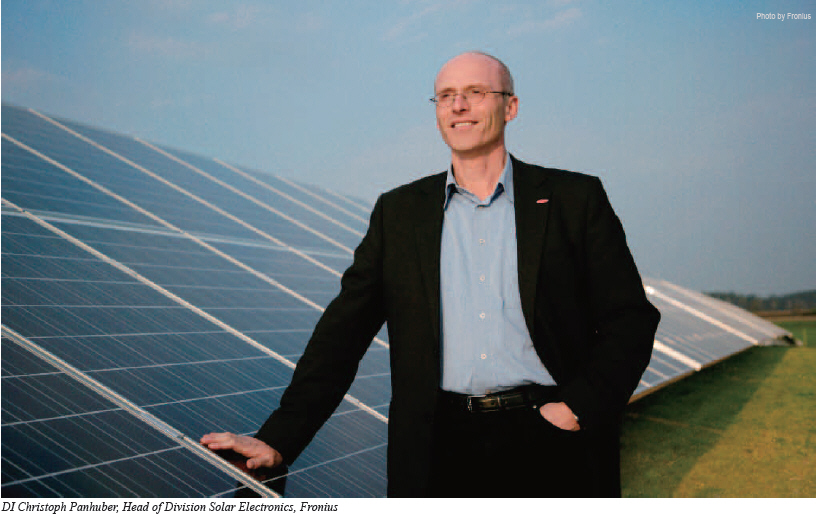Reported by Jeanny H. Lim

What do you see as the trends and market forces driving PV technology in the second half of 2011?
The German low voltage directive forces the most important trend in the second half of 2011. In Germany, there are a lot of photovoltaic constructions. Consequently, we need inverters with a special kind of performance. In the foreseeable future, other countries will measure up to Germany.
.jpg) Reactive power, controllability, smart grids, these are the key words. Storage of the photovoltaic current and increasing own consumption is the ambition. Every Fronius inverter (except the Fronius IG series) is ready for the low voltage directive and the mean voltage directive. Reactive power, controllability, smart grids, these are the key words. Storage of the photovoltaic current and increasing own consumption is the ambition. Every Fronius inverter (except the Fronius IG series) is ready for the low voltage directive and the mean voltage directive.
Energy management is becoming increasingly important. Feed-in tariffs and private consumption are being discussed on a daily basis. Quality leader such as Fronius is also very much involved in this area and is making its own contribution to energy management. The energy management function for the Fronius IG Plus series enables system operators to use more of their own PV-generated energy.
It is possible to configure a power hysteresis using a signal card in the inverter. This means that on/off thresholds can be set on the inverter as units of power (Watt). An example of how this works is as follows: If the inverter delivers more than 2,000 W of power, the relay output is activated on the signal card. When production falls below 1,800 W, it is deactivated again. The self-generated PV current is not fed into the grid, but can be used in one’s own home.
Regarding technical trends, the main topics are safety and fire protection. At Intersolar 2011, Fronius presented the Fronius arc detector. This is a new device to ensure that safety standards for PV systems are always maintained. PV systems have a long service life, meaning that some electrical connections can work loose over time, leading to the risk of arcs occurring.
As a result of the missing earth potential in the direct current range, the arc does not extinguish easily of its own accord. A conventional inverter does not detect the arc and therefore, continues to feed energy into the grid. Fronius inverters, which are fitted with a Fronius arc detector, recognize serial arcs automatically and extinguish them by ensuring that the devices disconnect themselves from the grid. The inverter can be reconnected either manually or automatically once the arc has been detected.
The Fronius arc detector will be available as an optional plug-in card that is inserted directly into the inverter, meaning no extra installation costs. The safety equipment is scheduled to go into series production in 2012.
How are PV prices expected to develop in the second half?
Because of the current market situation, the prices are under pressure and the inverter industry cannot just request the module industry for price reductions.
Where do you put your focus this year, in terms of business growth and technology development?
With the opening of seven new international subsidiaries in 2010, the internationalization of Fronius is progressing rapidly. Since last year, Fronius has added offices in Australia, Great Britain, Turkey, Canada, Mexico, Switzerland and Slovakia to its solar electronics family, with further strengthening of the global presence envisaged for 2011. Our objective is healthy growth.
Jeanny H. Lim is Editor-in-Chief of InterPV. Send your comments to swied@infothe.com.
For more information, please send your e-mails to pved@infothe.com.
ⓒ2011 www.interpv.net All rights reserved. |



